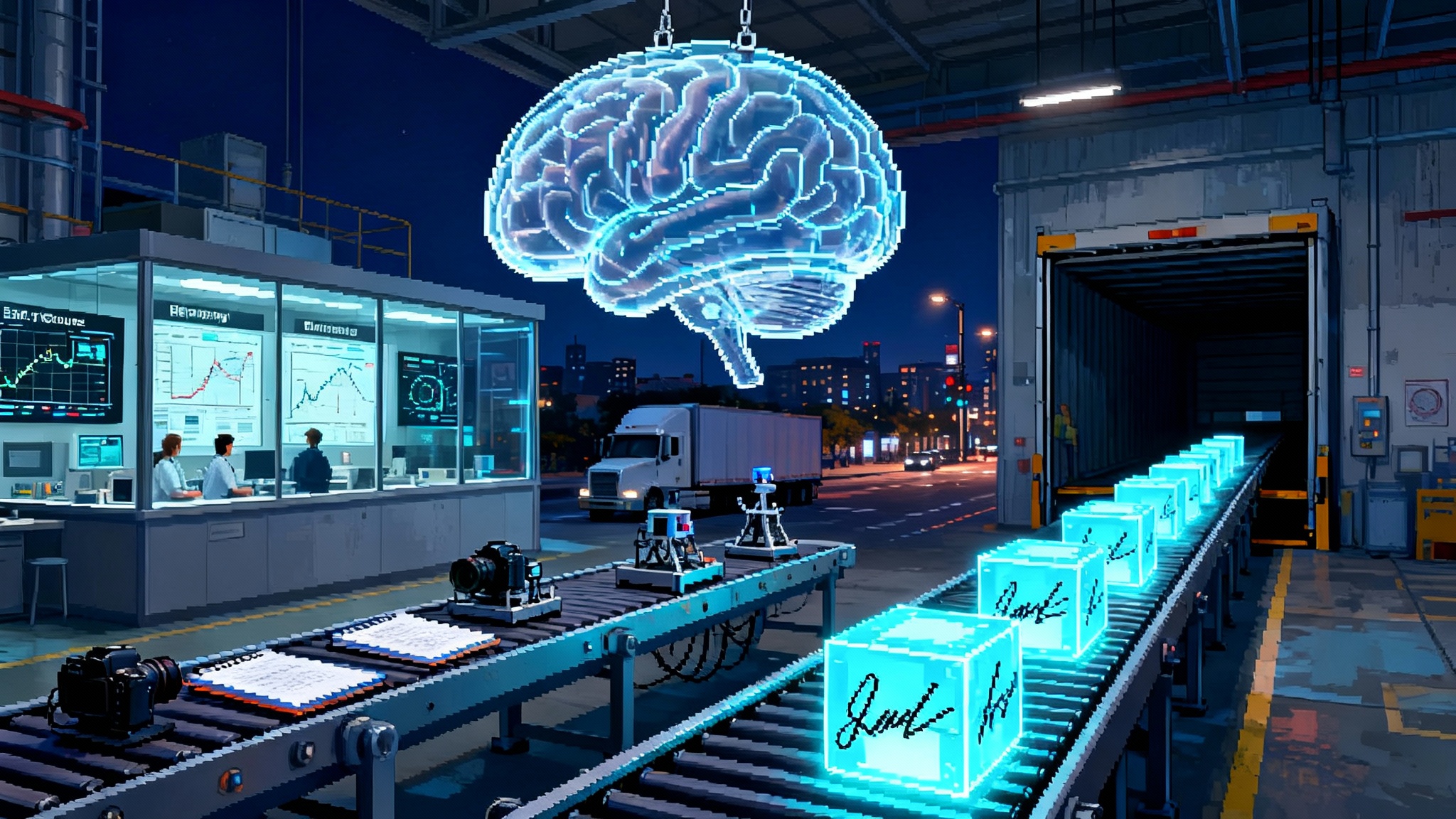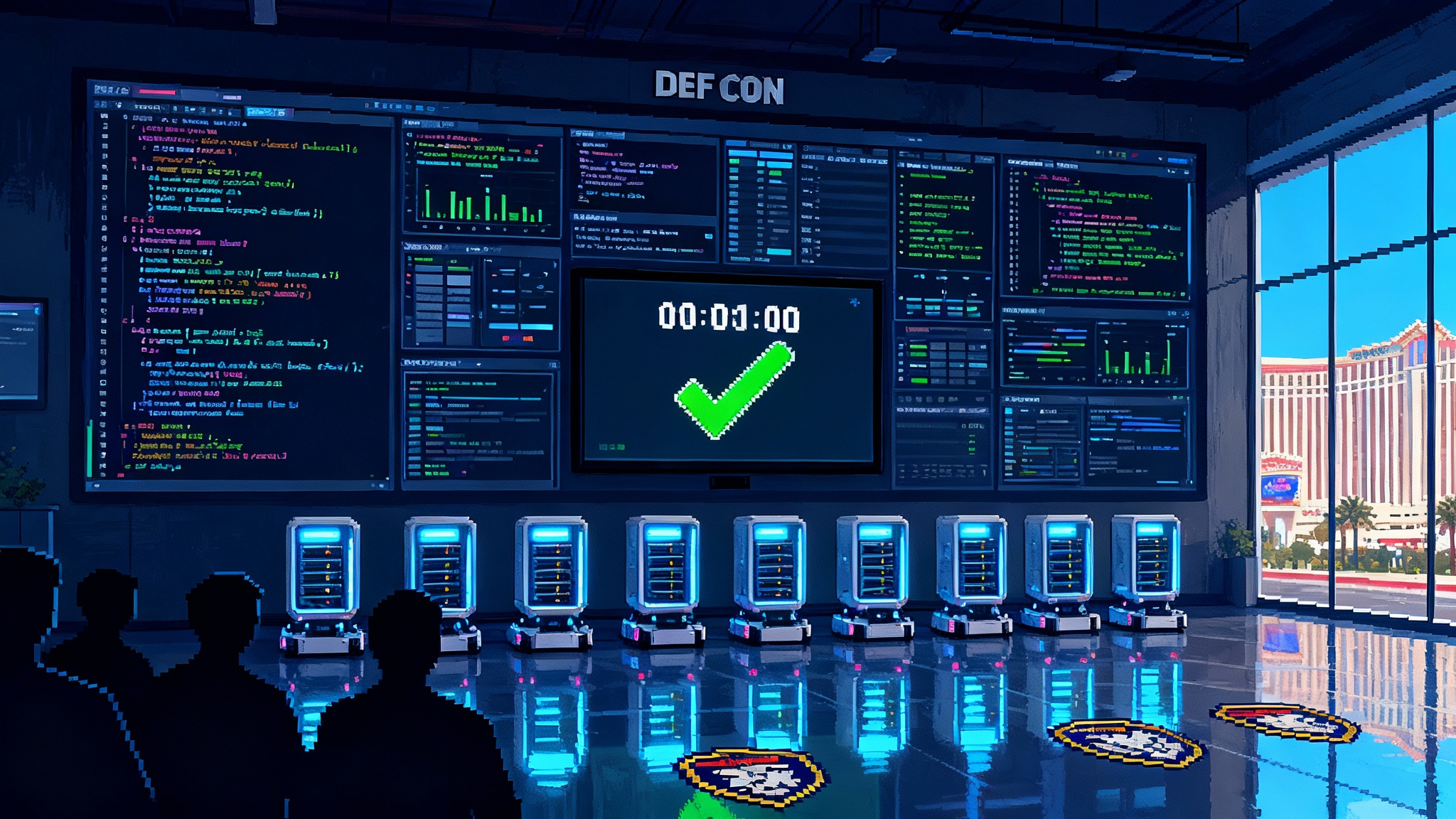Bootstrapping Reality as the Synthetic Data Regime Begins
Training data from the open web is hitting limits and new rules demand traceable inputs. Here is a practical playbook for mixing licensed, enterprise, and synthetic corpora with reality anchors and entropy audits to avoid collapse.

Breaking context: peak data meets policy
In early October 2025, a major bank's chief data officer said the quiet part out loud. High quality training data from the public web is close to tapped out. That admission did not surprise practitioners who have watched model gains slow while data risks grow. What is changing is the strategy. The scramble for bigger scrapes is giving way to licensed catalogs, governed enterprise corpora, and a rising tide of synthetic data.
Policy is accelerating the turn. On January 29, 2025, the U.S. Copyright Office released the second part of its artificial intelligence study. The message to builders was plain. If you want legal certainty at scale, you need traceable inputs and clear human contribution. Read the agency’s position in the Copyright Office AI Part 2. In Europe, obligations for providers of general purpose models began applying on August 2, 2025, including transparency about training data sources and respect for copyright, with added duties for models that meet systemic risk criteria. See the Commission’s summary of EU GPAI transparency obligations.
Taken together, a new regime has begun. The next frontier is not a bigger net over the public web. It is the careful bootstrapping of reality using a mix of licensed, enterprise, and synthetic data, backed by strong provenance.
The risk beneath self-training
Training on model outputs feels like free lunch. It is not. Imagine photocopying a photo, then copying the copy again and again. At first you hardly notice the loss. Over time edges blur, noise compounds, and artifacts look like truth. Model-on-model training without safeguards behaves the same way.
Here are the failure modes to watch:
- Feedback loops. Generated content flows back into training. The model becomes more confident in its median answers, even when they are incomplete. Tails shrink, rare facts fade, style diversity narrows.
- Goodhart pressure. If a metric becomes the target, the system finds shortcuts. Optimize novelty score or benchmark points without counterweights and you invite adversarial artifacts that score well but fail in the wild.
- Boundary blurring. Synthetic content is mislabeled as real because provenance got stripped or platforms blend both. Conjectures turn into observations.
- Stale priors. The world changes. Tokens, correlations, and norms evolve. If your generators were trained on last year’s world and dominate your corpus, you amplify yesterday’s truths and miss tomorrow’s.
None of this argues against synthetic data. It argues for discipline. The working analogy is self play in game agents. Self play works when you hold out human designed tests, inject randomness and adversaries, and checkpoint against known truths. We need the equivalent for language, vision, audio, and multimodal systems.
Why the pivot is rational
Licensing is becoming practical. News archives, photo libraries, code repositories, vertical glossaries, and scientific catalogs now offer commercial terms. Enterprises are waking up to the value of their first party data. Call center transcripts with consent, product telemetry, quality control logs, risk commentary that is scrubbed for secrets, and deidentified clinical notes carry context the open web lacks. These sources map to business outcomes, which gives training and evaluation an objective function beyond vibes.
Synthetic data brings three durable advantages:
- Coverage. You can synthesize rare edge cases that are hard to observe. Think turbine anomalies, multilingual error codes, pediatric dosing edge conditions, or long tail safety events.
- Balance. You can rebalance skewed classes without overfitting to a handful of real examples.
- Safety. You can red team prompts and responses without exposing real customer records.
The question is not whether to use synthetic data. It is how to use it without washing out the signal from the real world.
A two pillar playbook: reality anchors and entropy audits
If you want to scale without collapse, build on two pillars that rhyme with how science avoids error.
Pillar 1: periodic reality anchors
Anchors are fresh, curated samples from the physical and social world that the model must explain. They include sensor readings, field notes, images from specified cameras, transcripts from supervised studies, and expert annotations. They are collected on a cadence with a known sampling plan. Crucially, they are never generated by the model you are training.
Think of an anchor like a glucose test for an athlete. It keeps your model grounded in actual metabolism, not just treadmill performance. If anchor performance drifts while synthetic performance climbs, you are memorizing your own stories.
Implementation details you can put in a playbook:
- Minimum anchor share. Reserve a fixed fraction of each training cycle for anchors. A practical starting point is 10 to 20 percent of tokens or images, rising when the domain is volatile.
- Temporal freshness. Timebox anchors. Require that a meaningful fraction, for example one third, come from the most recent 30 to 60 days in fast moving domains such as finance or security.
- Human stewardship. Use domain experts to curate anchors and label failure modes. This is not a crowd task. It is closer to peer review.
- Modality spread. If your model is multimodal, ensure anchors include every input type. Do not let text anchors hide vision drift or the other way around.
Pillar 2: entropy and provenance audits
Audits answer two questions. How much real surprise does your corpus contain. Where did each shard come from. Entropy is your proxy for novelty. Provenance is your ledger of sources and transformations.
Operational details that work in practice:
- Entropy floor. Track cross entropy of the training corpus under a family of frozen probe models that stay constant across runs. Set a floor below which you trigger data refresh or generator variety. Falling cross entropy over the same domain often means you are overexposing the model to its own distribution.
- Novelty budget. Set a minimum rate of n gram or token novelty per million tokens relative to the previous cycle. For images and audio, use perceptual hash distance thresholds. If novelty slows below budget, expand anchor sampling or revise generators.
- Provenance tagging. Attach robust content credentials or equivalent metadata to every shard. Preserve source, license, timestamp, and generator identity. For background on this problem space, see how content credentials win the web.
- Synthetic share cap. Cap the share of synthetic data per domain and per training stage. Caps can start at 30 to 50 percent for general pretraining and be higher for safety tuning or tool use finetuning, where targets are programmatic or structured.
- Model origin detector. Train a small classifier to distinguish your model’s outputs from human or competitor outputs in your domain. Use it to monitor leakage of your own style back into the corpus. If the detector flags a rising share of model origin shards, tighten filters and expand anchors.
Reality anchors in practice
The term sounds abstract. It is not. Here are examples that teams use today:
- Robotics and autonomy. Weekly downloads of sensor logs from instrumented environments with human validated events such as falls, misgrips, near misses, and surprises. These logs keep action models honest about physics.
- Customer service. Curated transcripts and emails with consent labeled by expert reviewers for tone, policy compliance, and problem resolution. Anchors help models prioritize truth and empathy over fluency.
- Industrial quality. High resolution images from factory lines with metrology data and defect taxonomies curated by process engineers. Anchors preserve rare defects that synthetic renderers will miss if they only randomize texture and lighting.
- Markets and risk. Time stamped analyst notes, audit trails of trade exceptions, and structured event calendars. Anchors keep models current on jargon, products, and shocks.
- Science and health. Pre approved datasets from clinical studies, instrument readings, and lab notes with strict deidentification and governance.
Anchors need a steward. The role is a cross of librarian and product manager. The steward owns sampling plans, source relationships, label taxonomies, and ethical guardrails. They decide when to refresh, how to stratify, and when a drift is large enough to halt a release.
Auditing entropy and provenance, step by step
A concrete checklist for teams moving into synthetic regimes:
- Fix your probes. Select two or three frozen models as probes for entropy and perplexity. Evaluate every new corpus on the same probes so your scale is stable.
- Define domain buckets. Split data into domains that align with business tasks such as support, compliance, design, or logistics. You need per domain entropy and novelty, not a single global number.
- Establish a novel enough threshold. For each domain, define the minimum acceptable share of previously unseen tokens or patterns relative to the last stable release.
- Instrument your generators. Record sampling seeds, temperature, decoding algorithm, and prompt templates. Small decoding changes can quietly turn a diverse generator into a narrow one.
- Watermark and sign. Use robust content credentials to tag synthetic shards. Do not rely on file names. Expect merges and exports to strip weak tags.
- Build lineage graphs. Each shard should carry a pointer to its origin and every transformation applied. A lineage graph lets you compute how often a generator feeds on itself.
- Stress test with adversaries. Train adversarial generators whose job is to create ambiguous or brittle examples. Measure how they move entropy and downstream robustness.
- Trigger refreshes. If entropy drops below your floor or the model origin detector crosses a threshold, schedule anchor expansion and generator diversification.
For evaluation culture, complement static leaderboards with living diagnostics. When you are ready to rethink metrics, study the end of static leaderboards.
Compliance is nudging synthetic, not banning it
Regulation in 2025 is shaping incentives. In the United States, the January 29, 2025 Copyright Office guidance limits legal claims over purely machine determined expression and rewards traceable human contribution. In the European Union, providers of general purpose models must disclose training content summaries, respect copyright, and notify authorities if a model meets systemic risk thresholds as of August 2, 2025. None of this bans synthetic data. It raises the bar on sourcing and record keeping. Licensed corpora offer clean starting points. Enterprise corpora carry consent, access controls, and business context. Synthetic corpora can fill coverage gaps if they remain auditable and bounded by anchors.
What to do this quarter if you run an enterprise
- Inventory first party data. Create a catalog of internal text, images, logs, and tables. Classify by risk, consent, and business value. Many firms already own enough fuel for several cycles of model improvement once it is cleaned and labeled.
- Stand up a data trust. Establish cross functional governance with legal, security, product, and an operator. This group sets anchor sampling plans and provenance standards.
- Negotiate licenses opportunistically. Do not chase everything. Target a small set of high signal domains that fill known gaps such as sector glossaries, industry manuals, or vertical news archives.
- Fund human curation. Allocate budget for expert labeling of anchors. Resist the urge to outsource all labels to the crowd. Experts catch failure modes that generic raters miss.
- Pilot a synthetic program with caps. Use synthetic data to rebalance classes and generate rare cases, but cap its share by domain. Start with narrow pilots tied to a business metric such as first contact resolution or defect detection.
- Add content credentials. Require cryptographic signatures or equivalent robust metadata on all synthetic outputs. Make the default path preserve provenance through every pipeline.
What to do this quarter if you run a lab
- Publish anchor protocols. Describe your anchor sampling, refresh cadence, and curation roles in your model card. Give percentages, not slogans.
- Release lineage schemas. Provide a public schema for how you track provenance, including generator identity and transformation steps. Invite third parties to validate the schema on sampled shards.
- Share entropy dashboards. Release time series of cross entropy and novelty metrics over stable probe models for your core domains. You do not need to reveal raw datasets to demonstrate that you are not collapsing.
- Coordinate generator diversity. Maintain ensembles with different decoding strategies and inductive biases. Track their contributions separately in training logs.
- Set red team bounties. Pay for anchor violations and provenance failures found by external researchers. Treat them as near misses to improve process.
If you are wrestling with context design and retrieval as your anchors grow, revisit how long contexts change behavior in the the memory threshold essay.
What to watch in 2026
- Reality anchor markets. Expect businesses that sell scheduled, verified samples from the physical world. Think sensor cooperatives for factories, field notebooks for agriculture, or legally clean transcript panels for service industries.
- Standardized entropy floors. Industry groups are likely to converge on baseline novelty thresholds, much like crash safety standards shaped early automotive design.
- Provenance interoperability. Signatures must survive resizing, format shifts, and platform hops. The winning standards will preserve credentials across common edits and exports.
- Systemic risk thresholds. As regulators refine criteria for models considered systemically risky, expect more structured audits and public reporting on anchors, novelty, and lineage.
A note on cost and speed
Synthetic data looks cheap and endless. In practice, costs move. Anchors require collection, cleaning, and expert review. Provenance infrastructure demands engineering, storage, and sometimes product changes. The good news is that these investments are reusable. Once your pipelines and schemas exist, each cycle moves faster. The right comparison is not a one off scrape of a website. It is a controlled supply chain that produces durable advantages and fewer legal surprises.
Bottom line
Training on your own outputs can be a powerful bootstrapping technique. It becomes fragile when you cut the tether to reality or lose track of what came from where. The next wave of progress will come from models that look outward regularly, measure their own surprise, and keep impeccable ledgers. Build with periodic reality anchors. Monitor entropy and provenance as first class metrics. Treat synthetic data as a tool for coverage, not a substitute for the world. That is how you scale without losing the plot in the synthetic data era.








